Today I’m thrilled to be welcoming Siru Curzon to the blog. Once the owner of what was (unofficially!) the largest carnivorous plant collection in Finland, Siru is now a qualified horticulturist and botanical artist living in the US. Long-time readers of the blog may remember I featured Siru in my round-up of Instagram growers back in 2017.
For her first contribution to Tom’s Carnivores, Siru has shared an account of how she got started in the hobby as a teenager, the story behind her appearances in local newspapers, her experiences working in conservation at the Meadowview Biological Research Station in Virgina, and a showcase of her fantastic carnivorous plant artwork.
Enjoy! If you’d like to see more articles like this, please let me know. To receive email notifications when I publish new articles, you can subscribe here.
Jump to a particular section…
- The Biggest Carnivorous Plant Collection in Finland
- Meadowview Biological Research Station
- Carnivorous Plant Art
1. The Biggest Carnivorous Plant Collection in Finland
My first encounter with carnivorous plants came in 2007, when I was 13 years old. Until then I had never even heard of them, but I happened to pick up a few plants from a newly opened plant store in my city. I tried to cultivate them like normal houseplants, but they declined and died within 6 months. My Nepenthes x ventrata lasted the longest, but died during a harsh Finnish winter without artificial lighting.
Nevertheless, I persisted! I started small when I joined a Finnish CP forum (now gone) and wanted to take part in a group plant import from Holland. I soon had 2 plants and was so hyped about owning species that none of my friends grew. Then I started asking my mom if I could use her credit card to buy from czplants. When I turned 18 I got my own PayPal account and started buying plants independently. I ordered a lot; so many, in fact, that I got an unofficial title of owning the biggest carnivorous plant collection in Finland. I had about 600 plants from tiny pygmy sundews to a giant Nepenthes truncata.
One summer I was working in a green space maintenance company, and one of my friends there suggested that I should report myself to the local newspaper in our city and tell them what I had in my room. I was pretty much the only one in Finland who had gone to these extremes trying to grow these things, and I’ve always been very bold when talking about carnivorous plants; I can literally talk for hours about how cool they are, and about their very fine and intricate designs. So I followed by colleague’s advice, but without high expectations.
Soon a reporter came, and I was featured in a front-page article with the title “Horticulturist student feeds rats to her plants”! I wanted people to give up their inaccurate media-given ideas about carnivorous plants, how they really don’t chomp people’s fingers off. The snowball started to roll, and I was asked to host a booth in a plant fair where I displayed my carnivores, sold plants, and I also gave two lectures. I’ve been on TV news and done probably 6-7 magazine/news articles.
Click on any photo to zoom in. Use arrow keys or swipe to navigate.
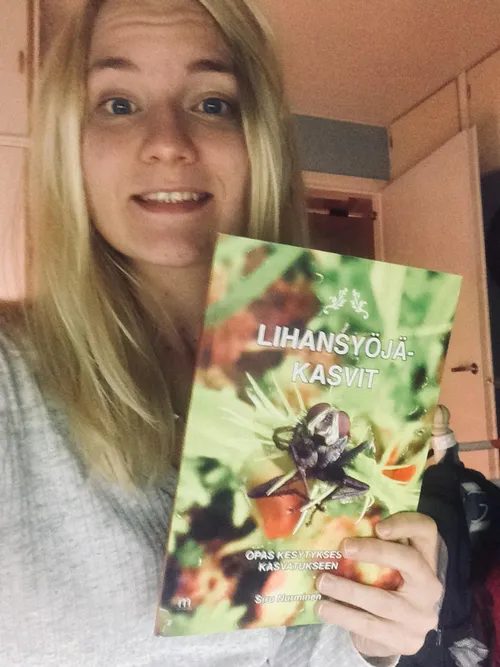 01. Siru and her book. Lihansyojakasvit is carnivorous plants in Finnish
01. Siru and her book. Lihansyojakasvit is carnivorous plants in Finnish 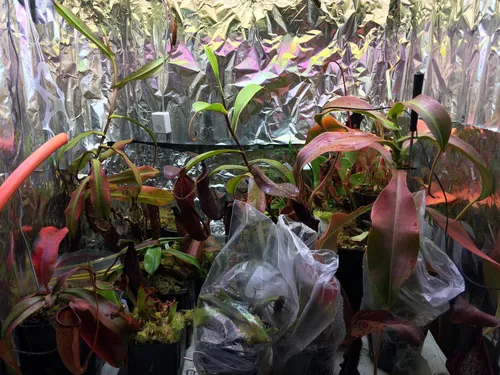 02. Sirus basement highland setup back in Finland
02. Sirus basement highland setup back in Finland 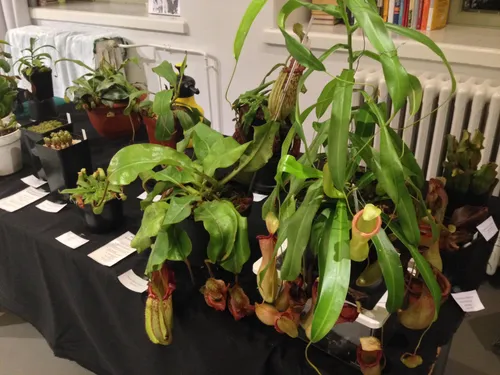 03. Sirus booth at an orchid exhibition in 2015
03. Sirus booth at an orchid exhibition in 2015 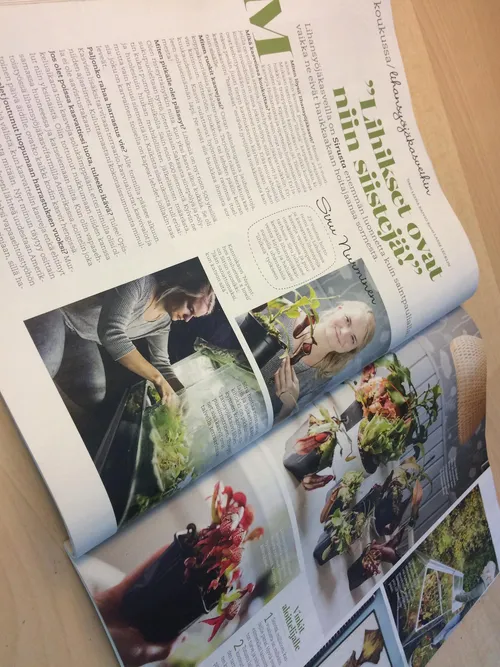 04. A Finnish magazine article on Siru published in November 2017
04. A Finnish magazine article on Siru published in November 2017 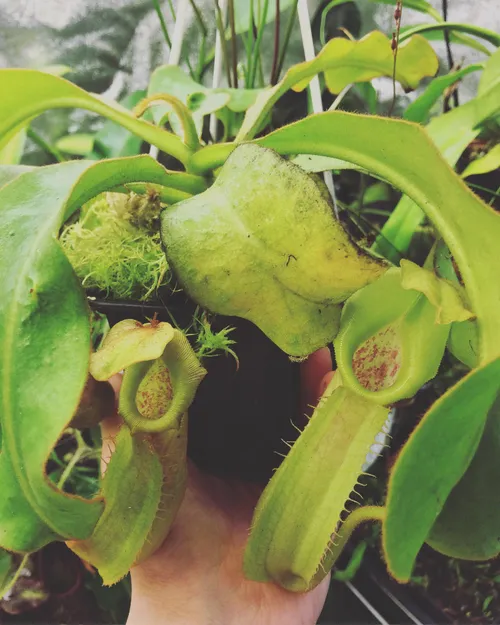 05. Nepenthes tiveyi x veitchii, the first of Sirus own crosses
05. Nepenthes tiveyi x veitchii, the first of Sirus own crosses 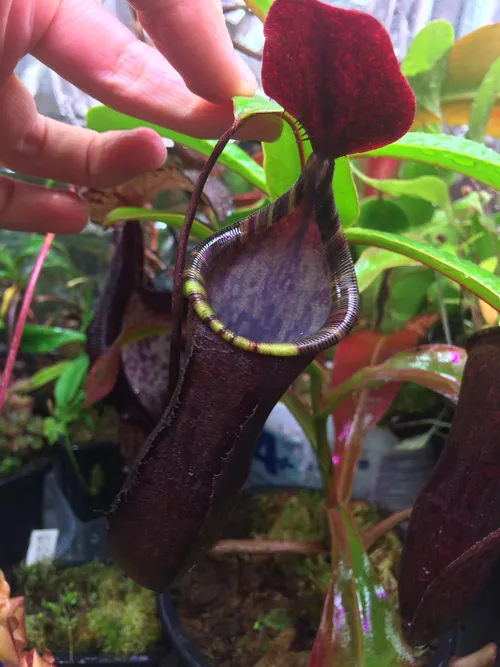 06. Nepenthes muluensis x lowii, from Sirus personal collection
06. Nepenthes muluensis x lowii, from Sirus personal collection In 2013 I started my studies at the Häme University of Applied Sciences (HAMK), in Lepaa, Finland, to become a horticulturist. During my second year I did an internship at the same store from which I bought my first carnivorous plants, but didn’t like the way the plants were treated; it was too commercial for me. To give an example, I printed new care instructions for their carnivorous plant display, but was told to take them down because they had “too much text on them”… namely critical information about dormancy and soil requirements!
In my third year at university, students had to complete something called “a special internship”. This placement would also be 3 months, but you had to choose somewhere at which you could see yourself working in the future. Having been in the hobby for 9 years, I wanted to go somewhere where I would be able to grow carnivorous plants!
I had to rule out Finland, obviously. I sent an application to Kew Gardens in London, which had been my dream since I’d visited them in 2012. Then I asked my Instagram followers about where I should go, and I got multiple answers. I ended up emailing Sarracenia Northwest, Atlanta Botanical Gardens, and Meadowview Biological Research Station about the internship. Meadowview answered, and gave me a yes. In 2016, I would be flying to America!
It was both exciting and a little sad. I would be leaving my family behind and entering a new world for a brief amount of time. Also, my family’s 21-year-old cat, Ninni, passed away that spring and I felt a relief to think about other things in life. This would also be my first time ever flying alone, not to mention over the Atlantic Ocean to another continent!
2. Meadowview Biological Research Station
Meadowview Biological Research Station is located in Woodford, south of Fredericksburg, Virginia, about 90 minutes away from Washington D.C. Their mission statement is:
To preserve and restore pitcher plants bogs and associated ecosystems in Maryland and Virginia utilizing a unique five step process of discovery, propagation, research, reintroduction, and education. To establish nature preserves to protect indigenous pitcher plant systems in perpetuity.
I got to meet Phil Sheridan, the President of the organization, and the horticulturist Richard Curzon. This being my first year at Meadowview, I had to get used to the organization’s work patterns and learn the style of repotting and dividing Sarracenia. At that time I had grown Sarracenia for less than 4 years and my plants were nowhere near as big as the ones at Meadowview. Seriously, the biggest plants were 38 inches tall with rhizomes as thick as my (feminine, lol) wrist! Hence the name, “The Georgia Giant”!
I also participated in plant shows in Richmond, VA and Washington D.C in the spring with the other workers. I helped prepare orders, putting the plants in ziplock bags and into boxes, and pollinated Sarracenia flowers, sowed seeds, and built plant beds.
Click on any photo to zoom in. Use arrow keys or swipe to navigate.
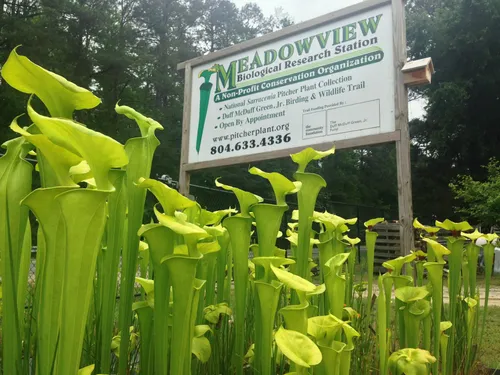 01. Sarracenia flava var maxima in front of the Meadowview sign
01. Sarracenia flava var maxima in front of the Meadowview sign 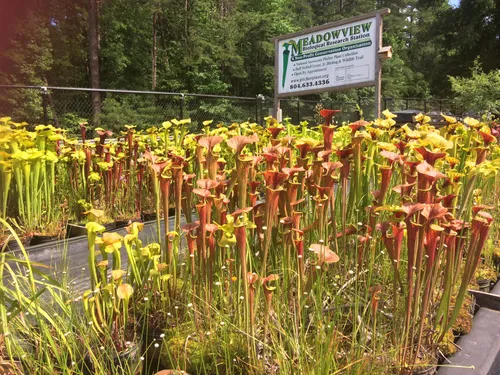 02. Sarracenia flava butterscotch with other flava forms
02. Sarracenia flava butterscotch with other flava forms 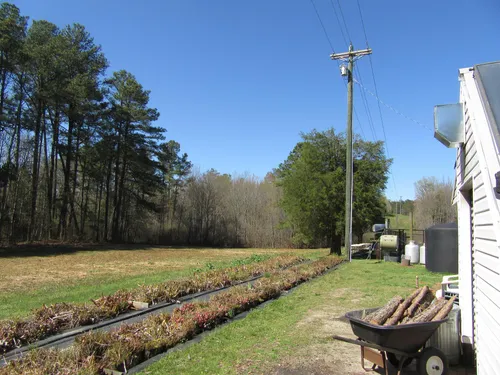 03. Spring at Meadowview, April 2016
03. Spring at Meadowview, April 2016 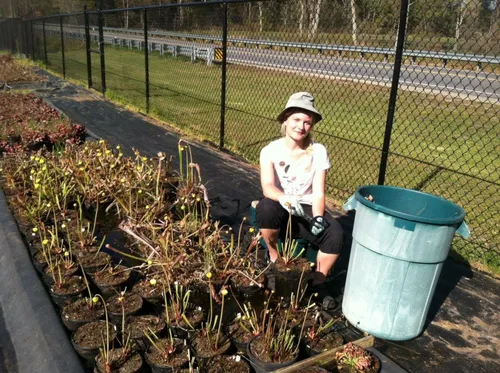 04. Siru working at Meadowview in 2016
04. Siru working at Meadowview in 2016 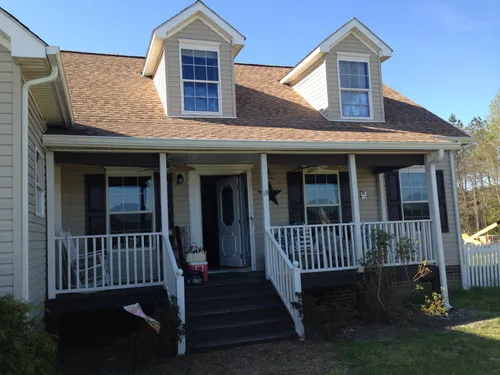 05. The Joseph Pines Preserve facility
05. The Joseph Pines Preserve facility 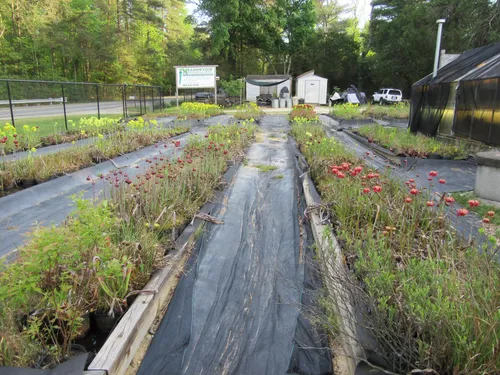 06. Plant beds at Meadowview in Spring
06. Plant beds at Meadowview in Spring 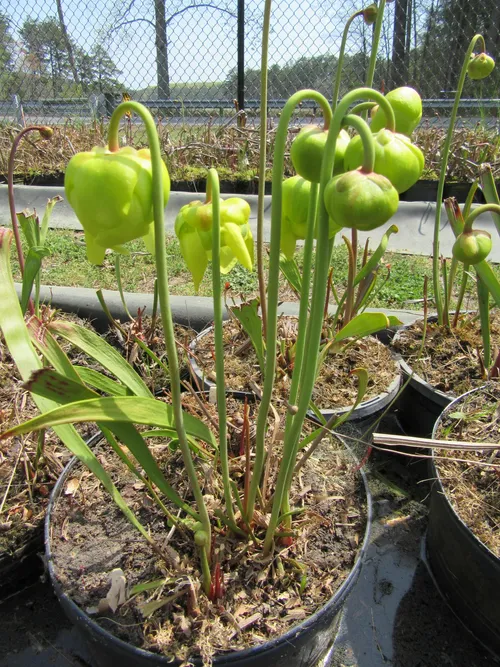 07. Sarracenia flava flower buds
07. Sarracenia flava flower buds 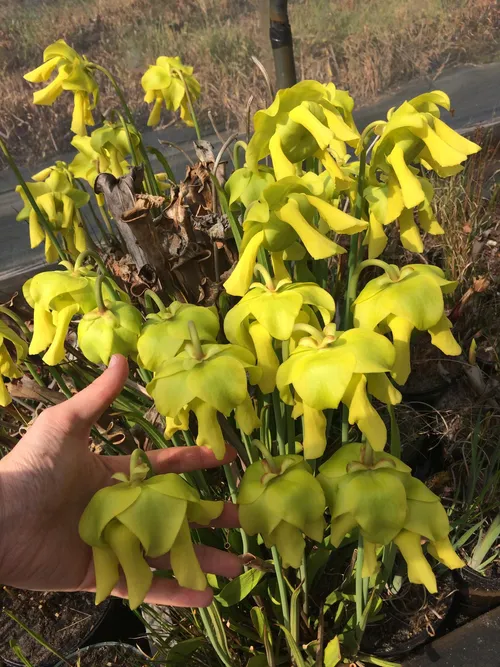 08. Sarracenia flava marshmallow flowers
08. Sarracenia flava marshmallow flowers 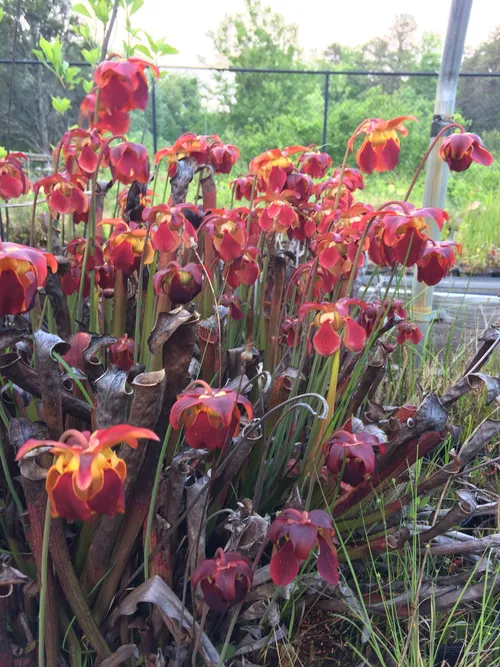 09. Sarracenia rubra subsp. gulfensis flowers
09. Sarracenia rubra subsp. gulfensis flowers 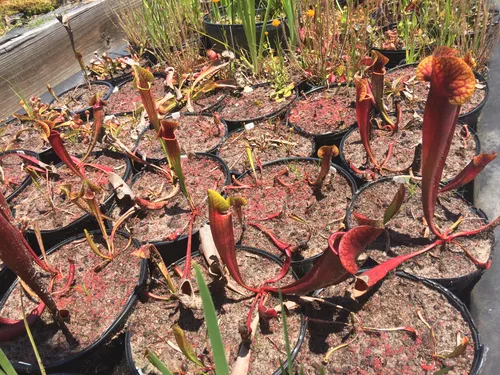 10. Freshly repotted plants with baby sundews
10. Freshly repotted plants with baby sundews 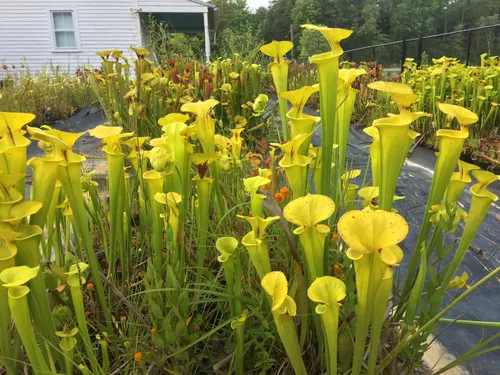 11. Sarracenia flava at Meadowview
11. Sarracenia flava at Meadowview 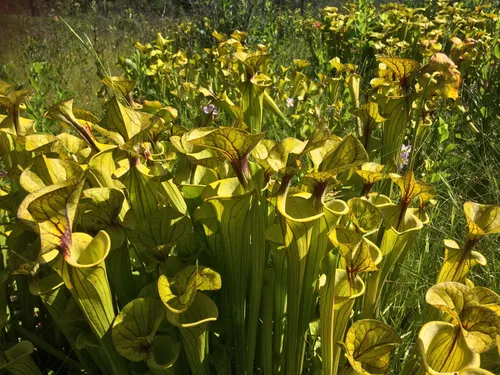 12. Sarracenia flava at the Joseph Pines Preserve
12. Sarracenia flava at the Joseph Pines Preserve 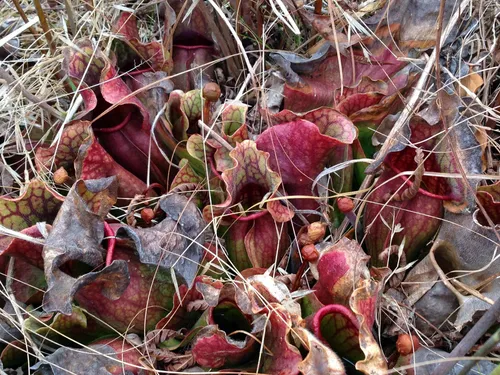 13. Sarracenia purpurea at the Joseph Pines Preserve
13. Sarracenia purpurea at the Joseph Pines Preserve 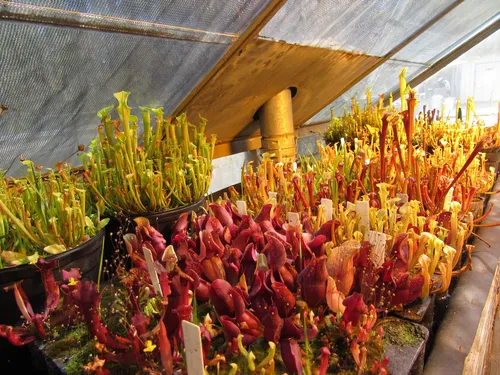 14. Sarracenia seedlings in the greenhouse
14. Sarracenia seedlings in the greenhouse 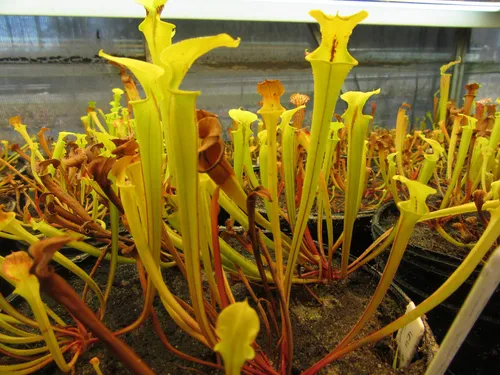 15. Sarracenia flava seedlings
15. Sarracenia flava seedlings .DzCTQLOg_jb07i.webp) 16. Sarracenia x catesbaei from Dinwiddie, VA (extinct site)
16. Sarracenia x catesbaei from Dinwiddie, VA (extinct site) 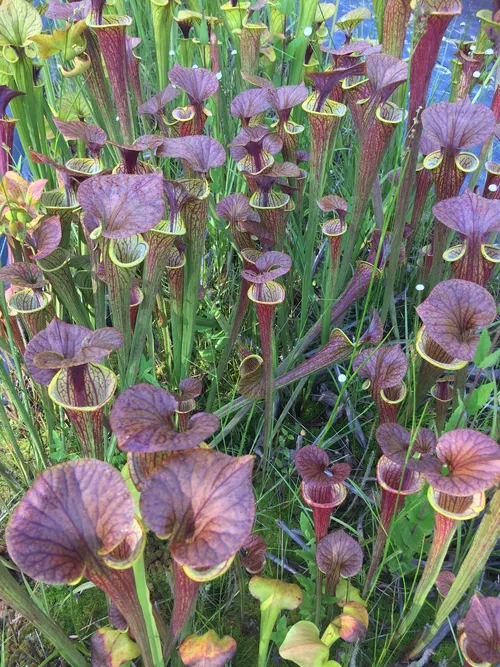 17. Sarracenia flava butterscotch
17. Sarracenia flava butterscotch 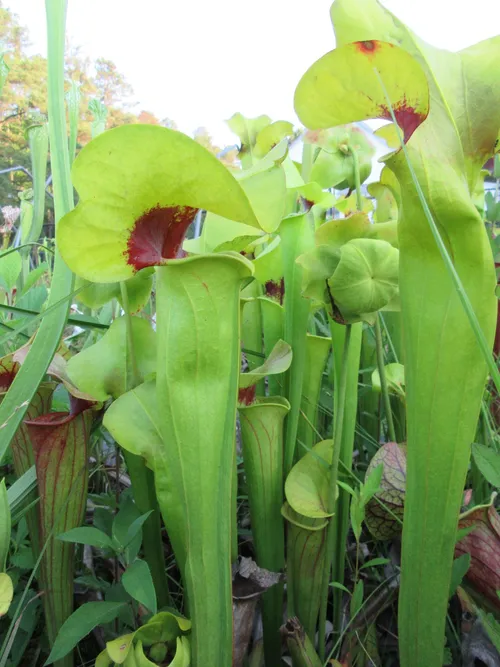 18. One of Phil Sheridans Sarracenia crosses
18. One of Phil Sheridans Sarracenia crosses 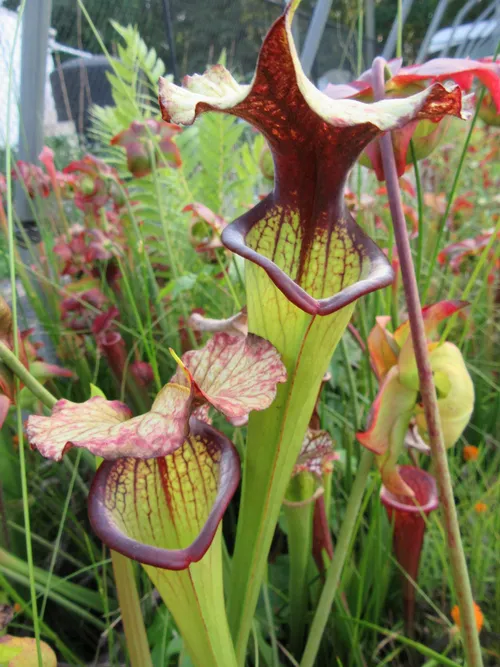 19. An unknown Sarracenia cross by Phil Sheridan
19. An unknown Sarracenia cross by Phil Sheridan .CYtuIixI_ZdFmx9.webp) 20. Meadowview in late June, when it can reach 100F (38C)
20. Meadowview in late June, when it can reach 100F (38C) 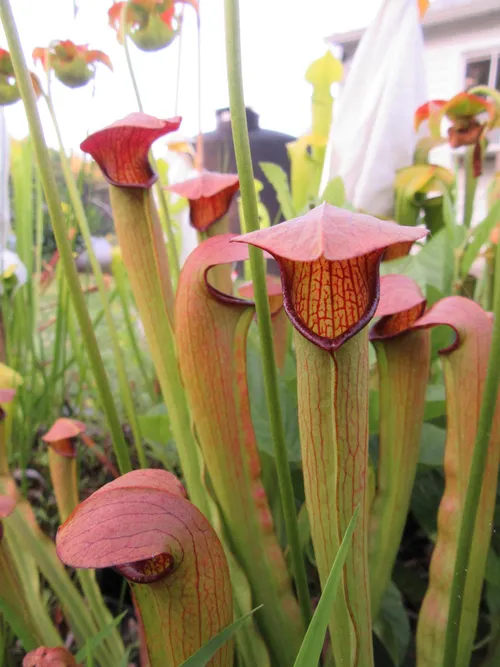 21. Sarracenia rubra x minor, select clone
21. Sarracenia rubra x minor, select clone 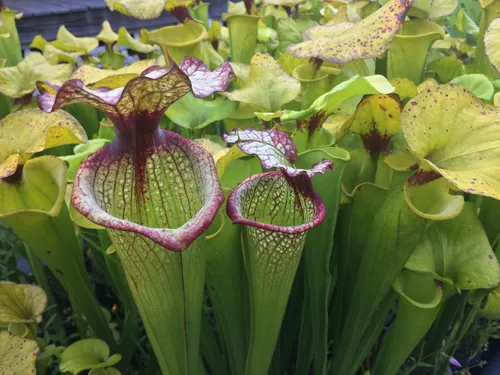 22. Sarracenia Leah Wilkerson
22. Sarracenia Leah Wilkerson 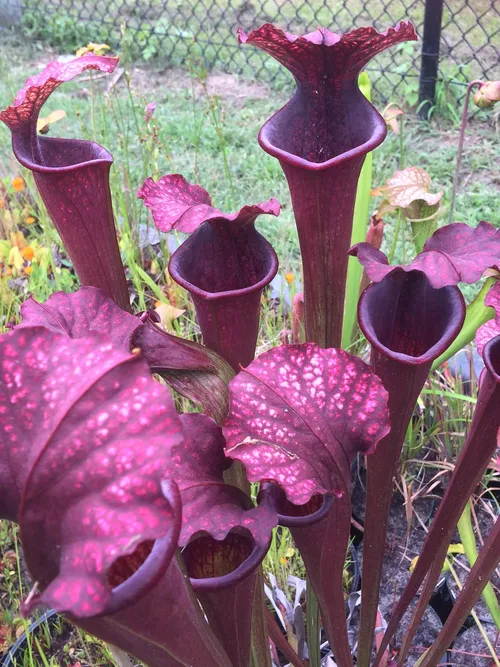 23. Sarracenia plum, a Meadowview cultivar
23. Sarracenia plum, a Meadowview cultivar 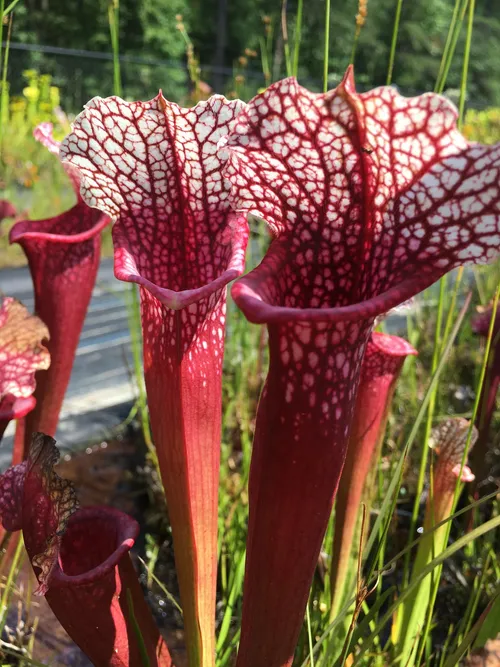 24. Sarracenia candy stripe, a Meadowview cultivar
24. Sarracenia candy stripe, a Meadowview cultivar 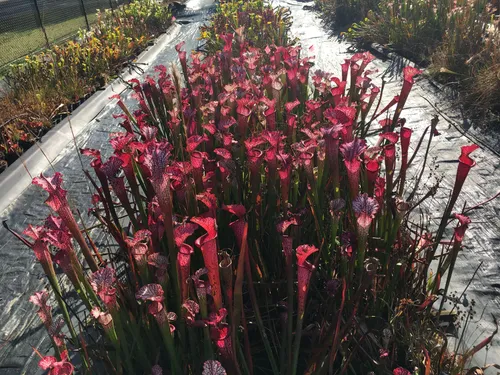 25. Sarracenia leucophylla burgundy, Meadowview clone
25. Sarracenia leucophylla burgundy, Meadowview clone 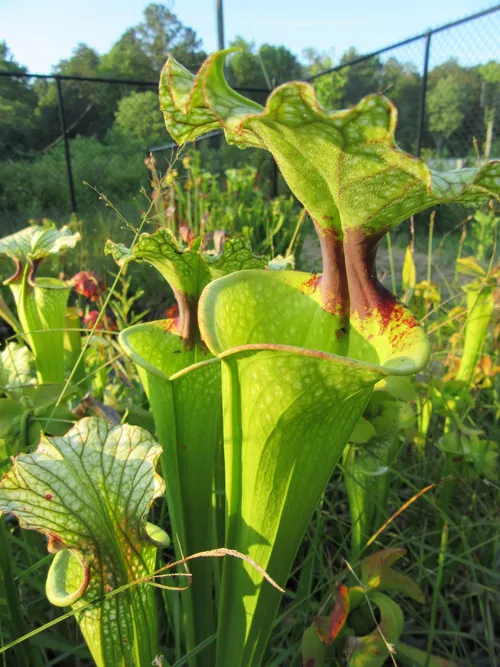 26. Sarracenia x moorei
26. Sarracenia x moorei 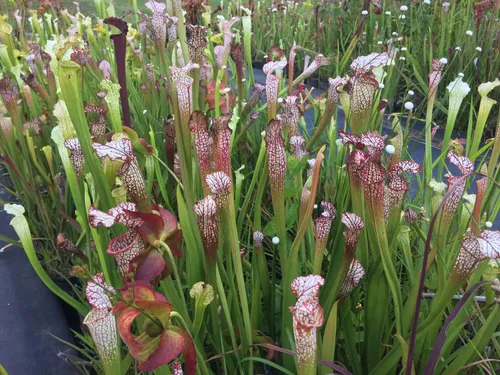 27. A bed of Sarracenia leucophylla at Meadowview
27. A bed of Sarracenia leucophylla at Meadowview 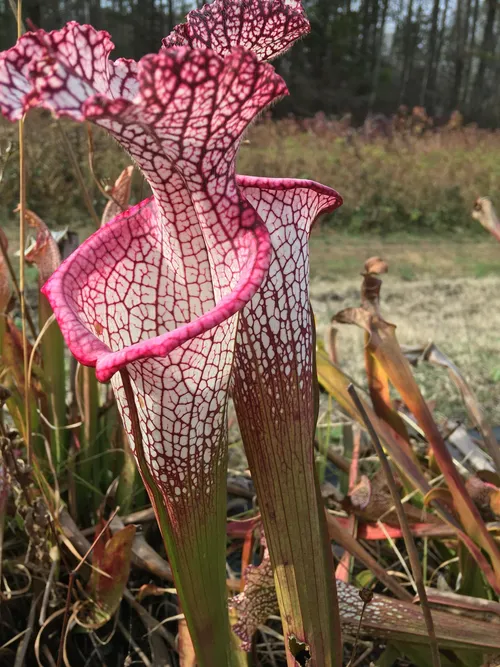 28. Sarracenia leucophylla from Liberty county, Florida
28. Sarracenia leucophylla from Liberty county, Florida 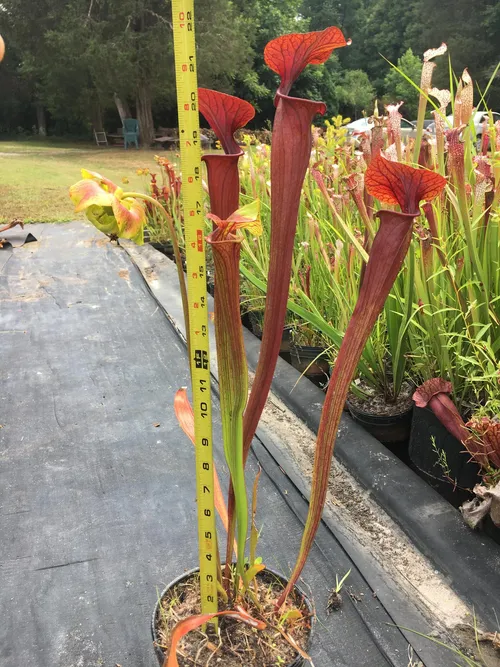 29. Sarracenia flava maroon about to go up on eBay
29. Sarracenia flava maroon about to go up on eBay 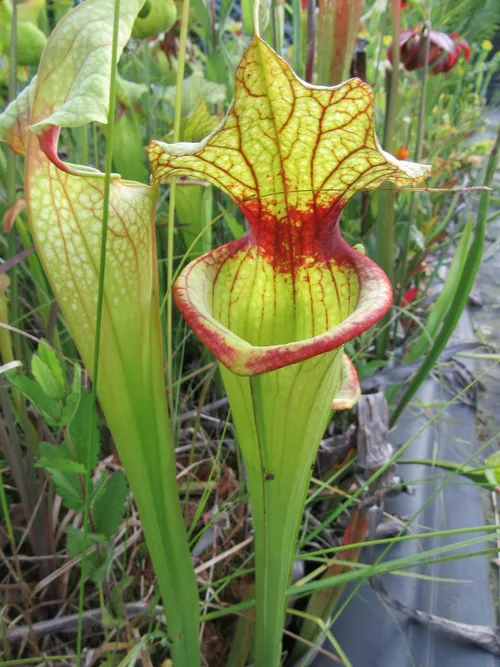 30. Sarracenia x moorei hot lips
30. Sarracenia x moorei hot lips 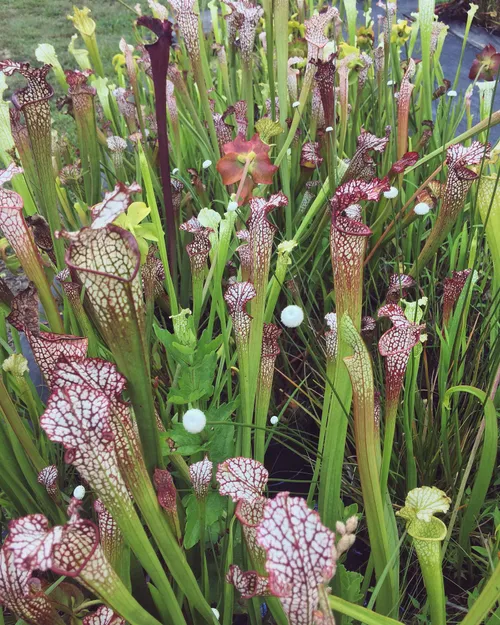 31. Sarracenia leucophylla and eriocaulon decangulare
31. Sarracenia leucophylla and eriocaulon decangulare 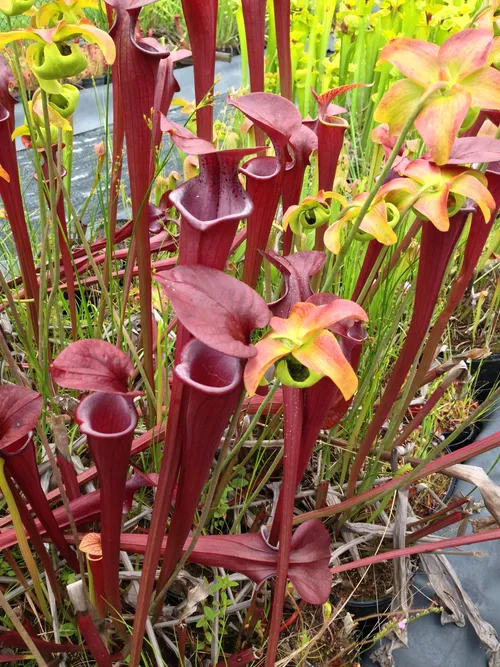 32. Sarracenia red viper, Meadowview cultivar
32. Sarracenia red viper, Meadowview cultivar 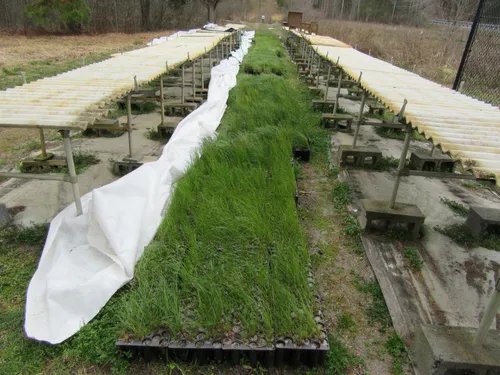 33. Longleaf pine seedlings
33. Longleaf pine seedlings 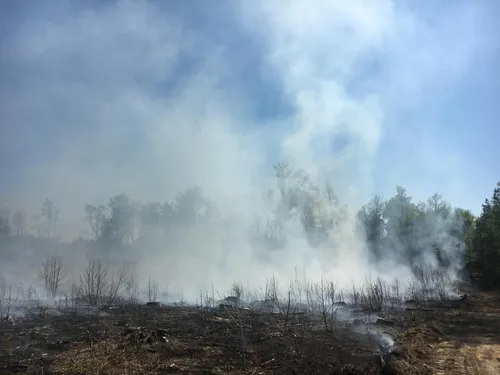 34. A prescribed burn at the Joseph Pines Preserve
34. A prescribed burn at the Joseph Pines Preserve 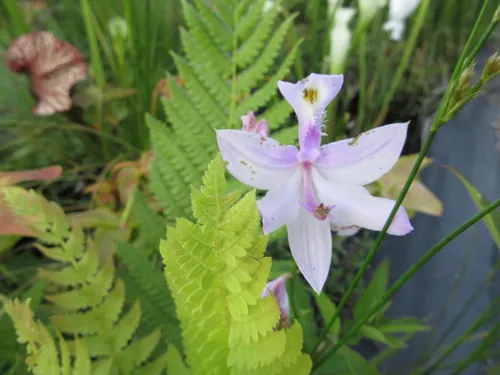 35. White flowered calopogogon tuberosus
35. White flowered calopogogon tuberosus 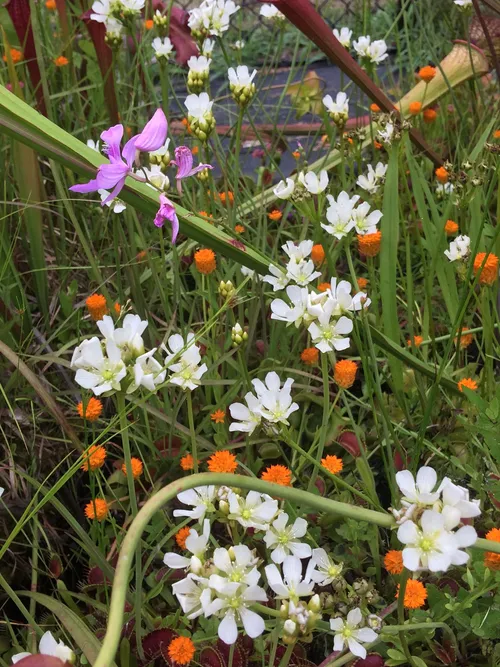 36. Flytrap flowers, calopogon tuberosus, and polygala lutea
36. Flytrap flowers, calopogon tuberosus, and polygala lutea 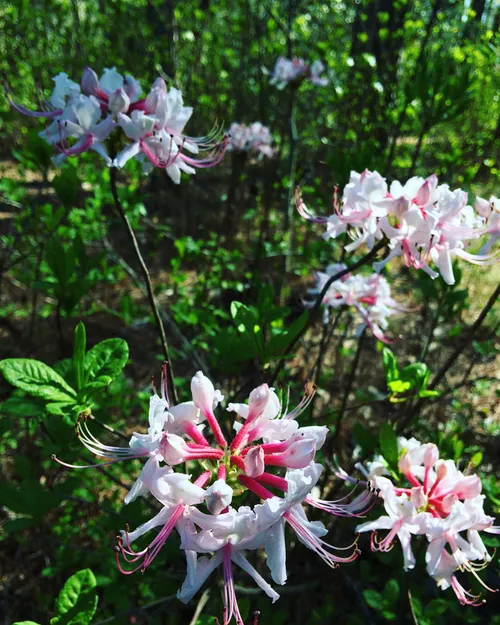 37. Bog azalea
37. Bog azalea 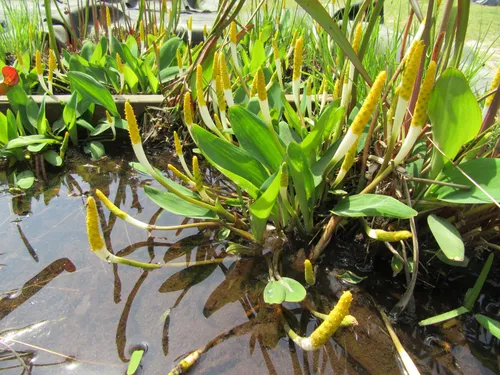 38. Orontium aquaticum, the golden club - associated species
38. Orontium aquaticum, the golden club - associated species 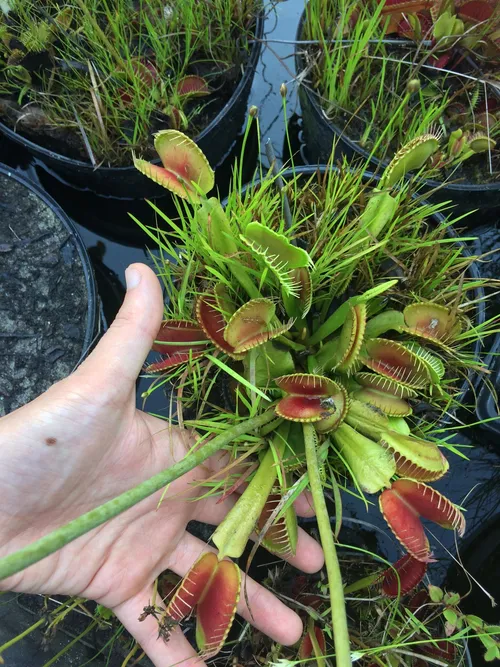 39. Meadowviews biggest flytrap, grown from seed
39. Meadowviews biggest flytrap, grown from seed 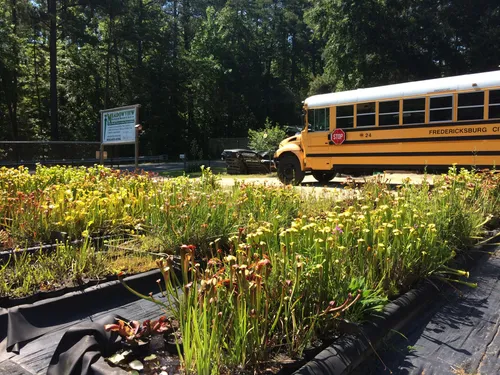 40. School groups visiting Meadowview during the summer
40. School groups visiting Meadowview during the summer Meadowview’s collection itself is extensive, with many interesting and cool crosses that Phil has produced over the past few decades. Many long benches full of Sarracenia flava, leucophylla, catesbaeis, and many complex hybrids with awesome color and shape variations. The collection is broadly split in two: first there’s the older plants, including rare specimens and Sarracenia with location data, and second the horticultural hybrids and plants destined for sales or plant shows.
At that time they also had a greenhouse filled with lowland Nepenthes, including a huge Nepenthes rafflesiana and Nepenthes truncata. The other side of the greenhouse was dedicated for seedling Sarracenia. On the far end of the property lay a big shed which was used to grow highland plants. Most of these plants were Richard’s, which he had brought to the house with him as he was working there full-time.
Meadowview also works to restore the longleaf pines which grow together with Sarracenia as part of the indigenous ecosystem. They have a 232 acre nature preserve called the Joseph Pines Preserve, in Sussex county, Virginia, where they have reintroduced S. flava and S. purpurea with Virginian origin as well as longleaf pines. The Meadowview headquarters in Woodford also has its own nature preserve of several acres - the Central Virginia Preserve - which borders the northernmost native pitcher plant bog in the state of Virginia. Here we cleared the bogs and cut scrubs to increase the light levels in the preserve.
My first internship at Meadowview lasted 3 months. Time flew so fast and I treated every day as a great blessing, just to think myself as a small girl from Finland, interning and living in the USA.
Click on any photo to zoom in. Use arrow keys or swipe to navigate.
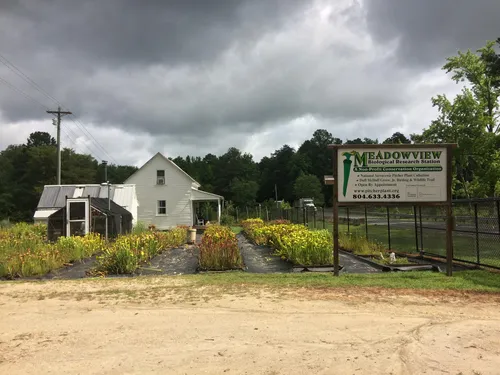 01. A storm over Meadowview, July 2017
01. A storm over Meadowview, July 2017 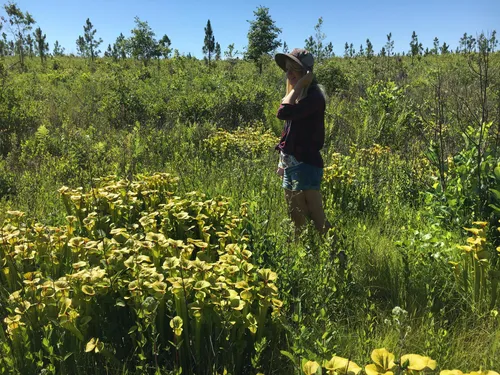 02. Siru at the Joseph Pines Preserve
02. Siru at the Joseph Pines Preserve 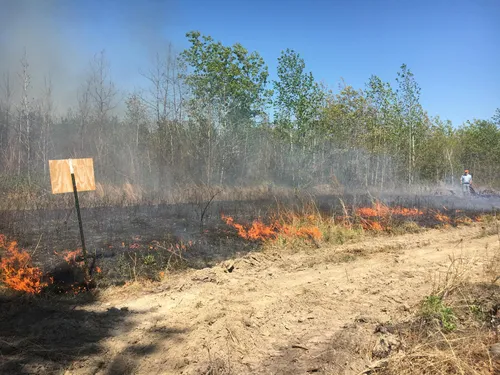 03. A prescribed burn at the Joseph Pines Preserve, May 2018
03. A prescribed burn at the Joseph Pines Preserve, May 2018 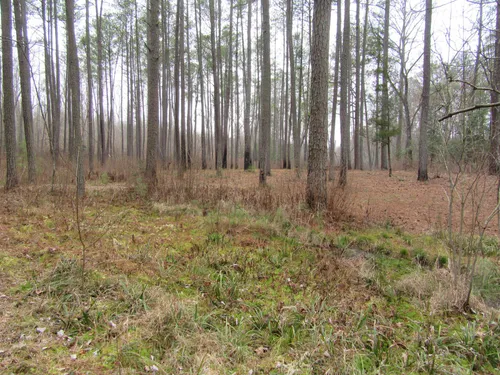 04. The central Virginia Preserve
04. The central Virginia Preserve 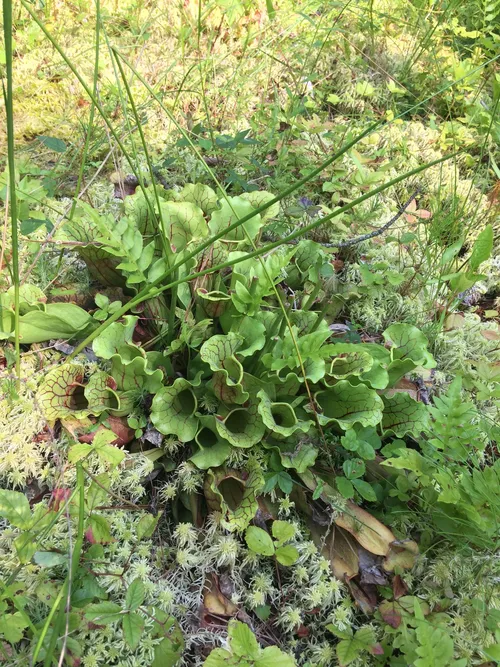 05. Sarracenia purpurea at the central Virginia preserve
05. Sarracenia purpurea at the central Virginia preserve 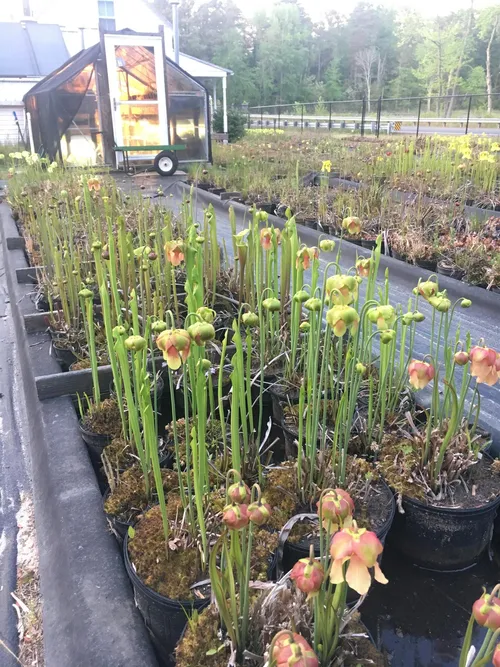 06. Tidy plants after a major repotting exercise the previous year
06. Tidy plants after a major repotting exercise the previous year 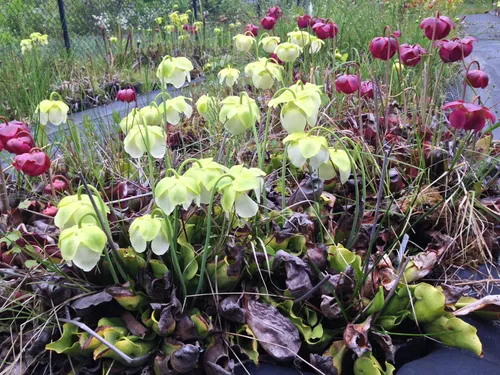 07. Sarracenia purpurea x rosea hybrids - north meets south
07. Sarracenia purpurea x rosea hybrids - north meets south 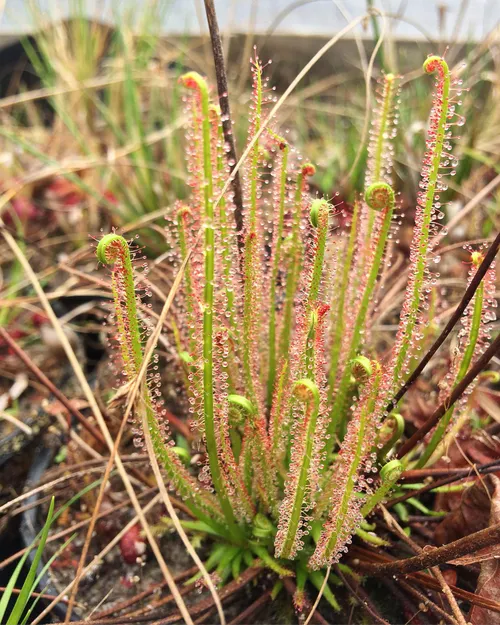 08. Drosera tracyi
08. Drosera tracyi 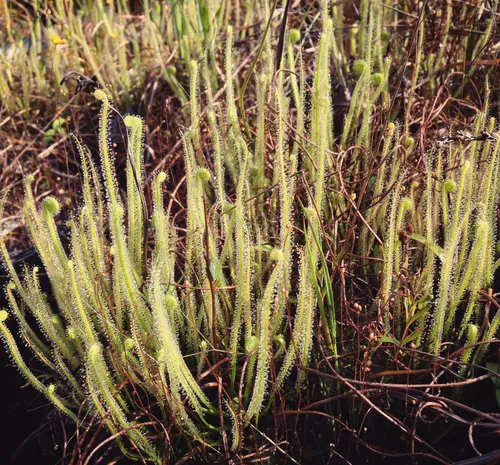 09. Drosera tracyi
09. Drosera tracyi %20at%20Meadowview.D4uCl3DE_Z1SlWTe.webp) 10. Drosophyllum (the dewy pine) at Meadowview
10. Drosophyllum (the dewy pine) at Meadowview 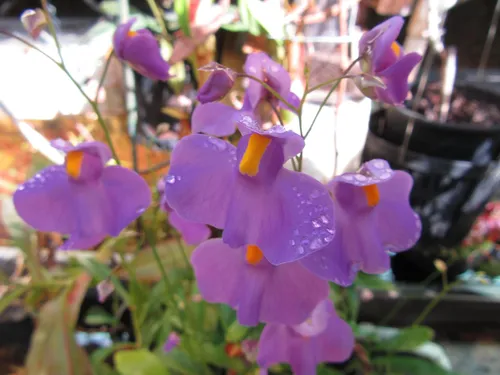 11. Utricularia longifolia
11. Utricularia longifolia 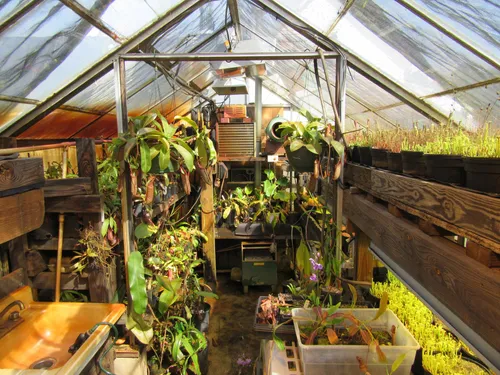 12. The Meadowview lowland greenhouse in 2017
12. The Meadowview lowland greenhouse in 2017 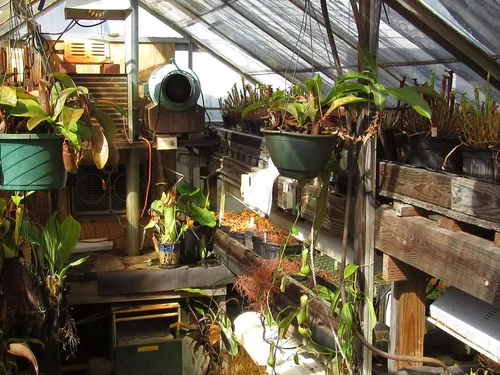 13. The lowland greenhouse
13. The lowland greenhouse 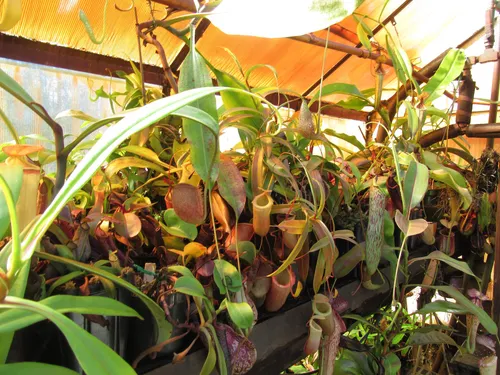 14. Nepenthes in the lowland greenhouse
14. Nepenthes in the lowland greenhouse 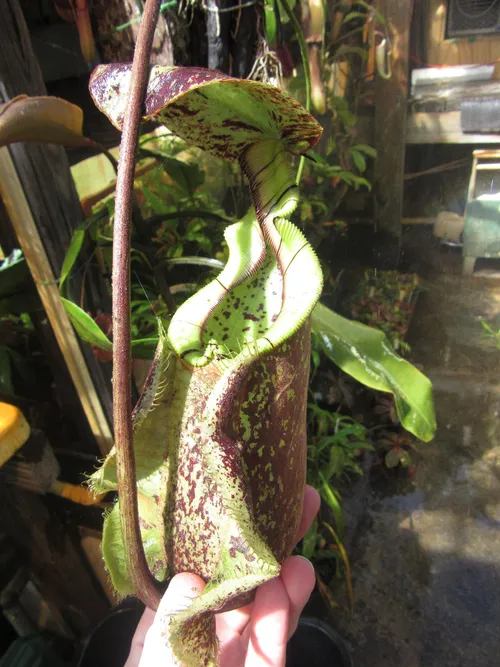 15. A giant Nepenthes rafflesiana pitcher
15. A giant Nepenthes rafflesiana pitcher 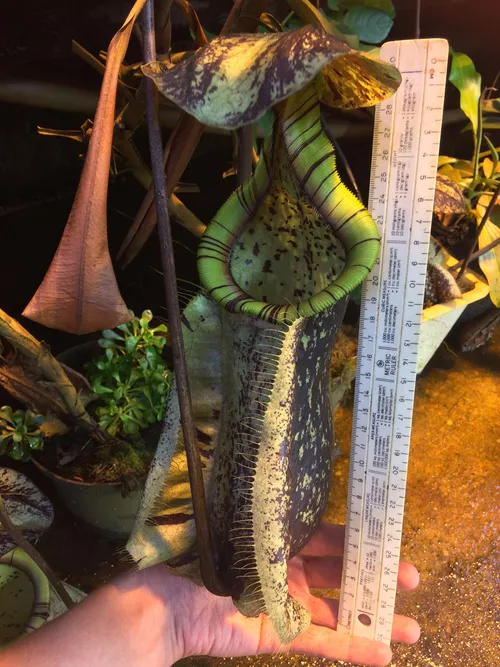 16. Another giant Nepenthes rafflesiana pitcher
16. Another giant Nepenthes rafflesiana pitcher 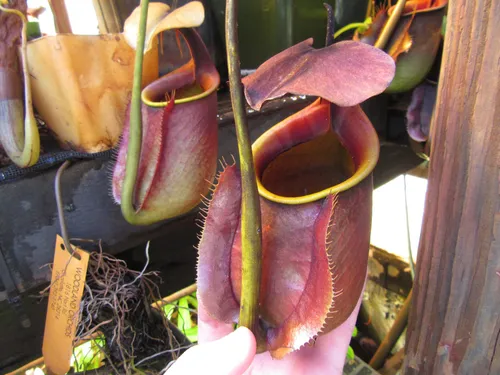 17. Nepenthes bicalcarata
17. Nepenthes bicalcarata 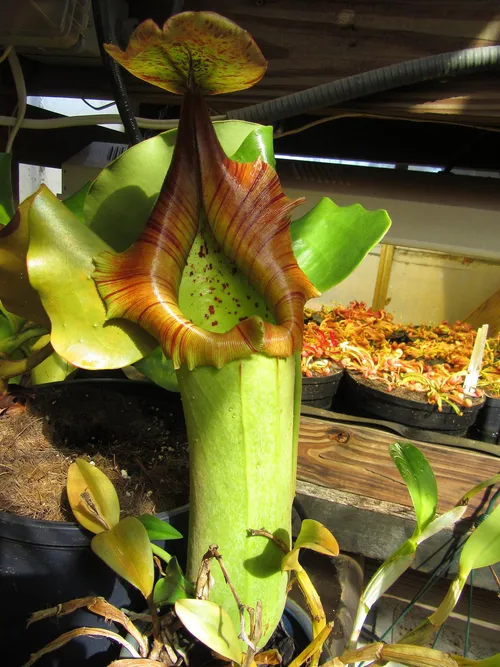 18. A giant Nepenthes truncata
18. A giant Nepenthes truncata 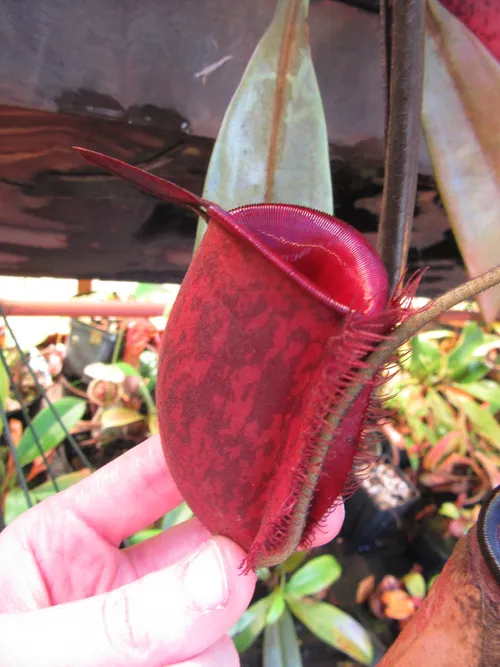 19. Richards clone of Nepenthes ampullaria
19. Richards clone of Nepenthes ampullaria 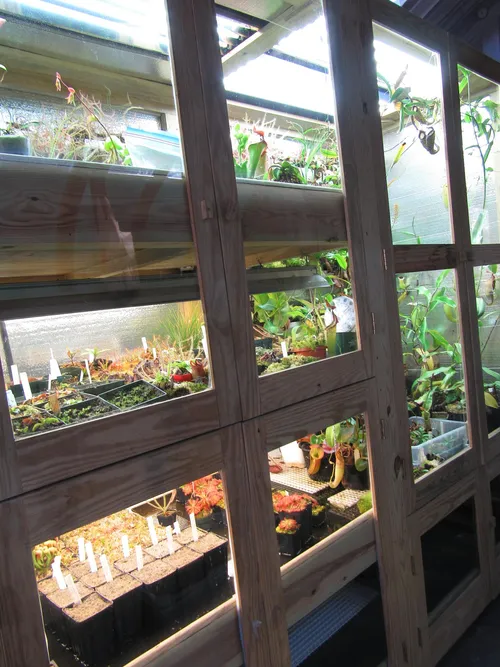 20. The highland shed at Meadowview
20. The highland shed at Meadowview 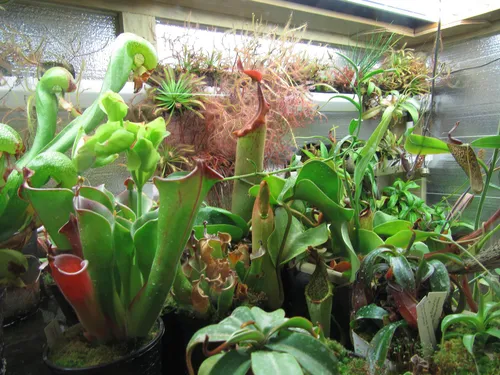 21. Inside the highland shed
21. Inside the highland shed 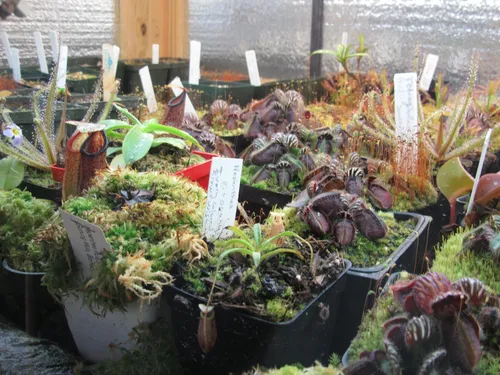 22. Various genera in the highland shed
22. Various genera in the highland shed 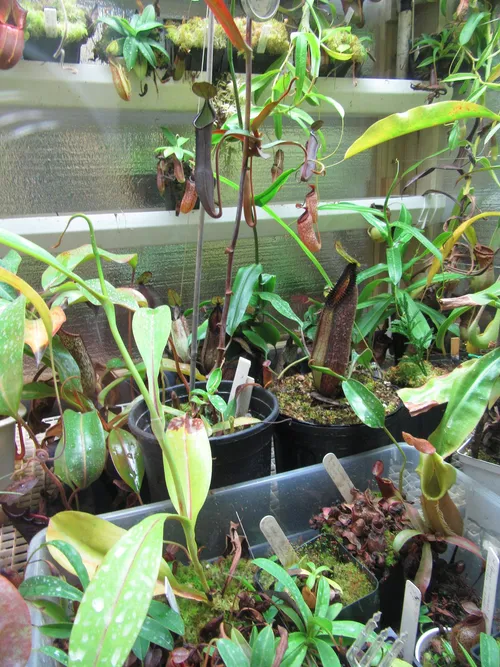 23. Nepenthes in the highland shed
23. Nepenthes in the highland shed 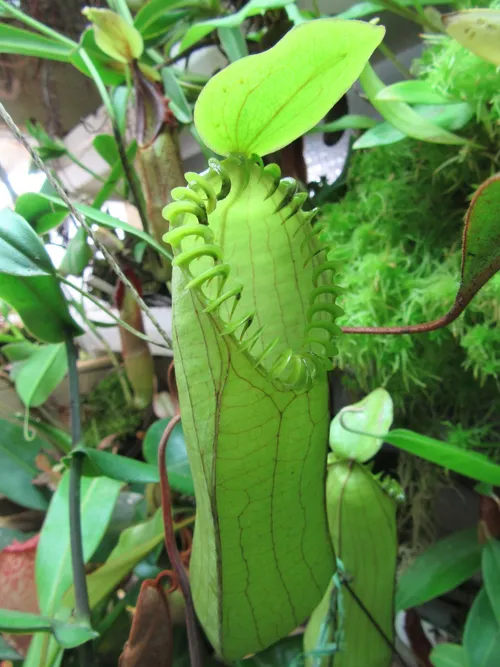 24. An upper pitcher on Richards Nepenthes hamata
24. An upper pitcher on Richards Nepenthes hamata 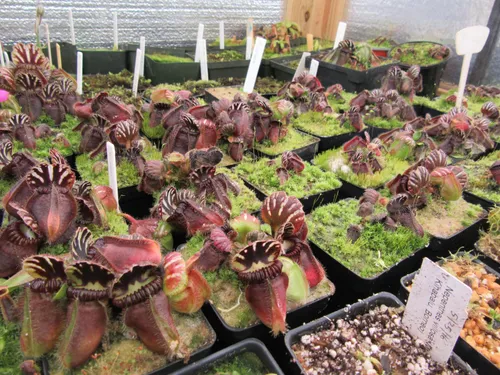 25. The highland shed. Most of these Cephalotus were wiped out by a fungus outbreak in 2017
25. The highland shed. Most of these Cephalotus were wiped out by a fungus outbreak in 2017 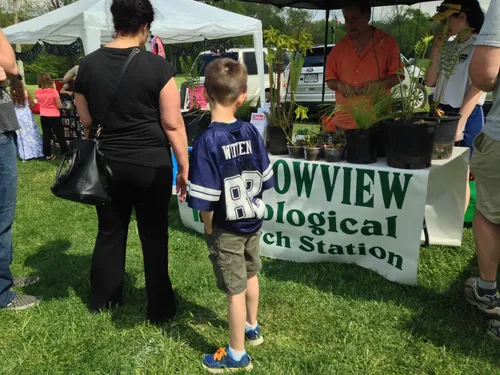 26. Meadowviews booth at Earth Day festival in Fredericksburg
26. Meadowviews booth at Earth Day festival in Fredericksburg 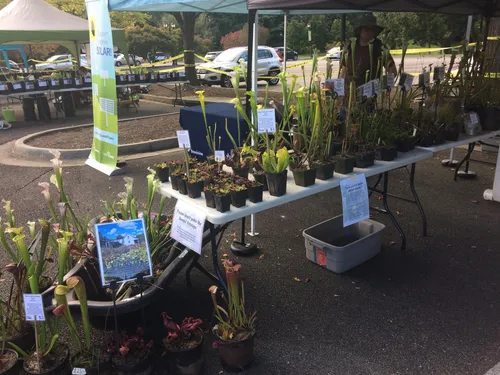 27. Meadowviews booth at Lewis Ginter Botanical Garden
27. Meadowviews booth at Lewis Ginter Botanical Garden  28. A panorama of Meadowview in 2017
28. A panorama of Meadowview in 2017 I returned to Meadowview in 2017 after graduating from university and claiming my horticulturist title, and this time I stayed for 6 months. The longer stay made it a more versatile year, and I had time in the fall to attend more plant shows on top of dividing plants and sowing seeds. During this second visit, Richard and I also started to repot the old collection.
In 2018 I faced another challenge as Richard left Meadowview to work elsewhere. I sort of grabbed his torch and worked with another great guy, Cody Cook, for the whole summer alongside two other interns. We liquidized Meadowview’s collection of Nepenthes and tropical plants to focus more on growing Sarracenia and Dionaea.
In summary, Meadowview is probably the greatest manmade ‘Sarracenia garden’ I’ve ever seen in my life so far.. I’m grateful for each of the 3 summers I got to spend there, contemplating life and just enjoying the beauty of nature. I would certainly like to help them out in the future.
3. Carnivorous Plant Art
I’m currently living United States and got married to Richard last fall (😊). While waiting for the paperwork associated with moving to the United States to go through, I’ve rediscovered my love of botanical art.
I used to draw seriously before carnivorous plants captured my imagination. I spent a lot of time on the website ‘deviantArt’ drawing animals between 2008 and 2012. Sad to say, I used to draw many things because those subjects were popular. I got commissions and made collaborations and trades, but as my love of plants grew deeper I switched my subject to draw what I loved, and it cost me my main audience. I guess they didn’t think plants were cool (but fuzzy and furry animals were). I didn’t give up, but had a long break from art until late 2018.
Before I decided to pursue horticulturist career I had thought about being an artist, so in a way I’m combining two of my favorite things!
Click on any photo to zoom in. Use arrow keys or swipe to navigate.
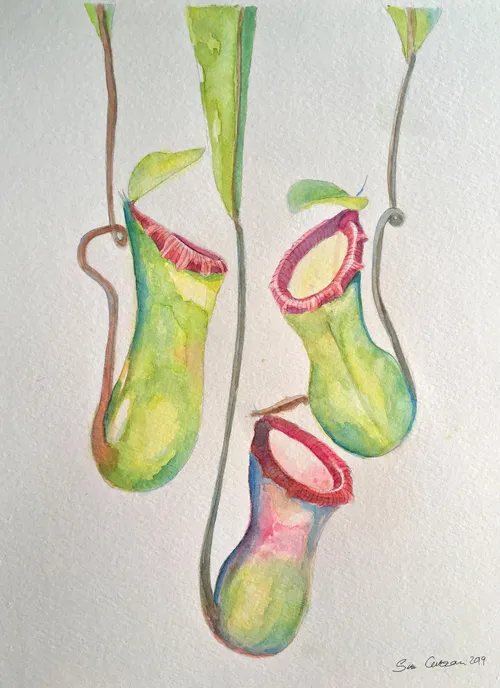 01. Nepenthes ventricosa painting by Siru Curzon
01. Nepenthes ventricosa painting by Siru Curzon 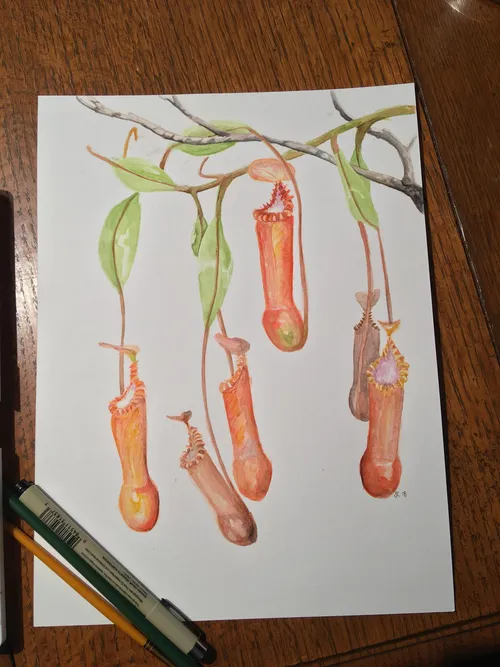 02. Nepenthes edwardsiana, painted by Siru Curzon
02. Nepenthes edwardsiana, painted by Siru Curzon 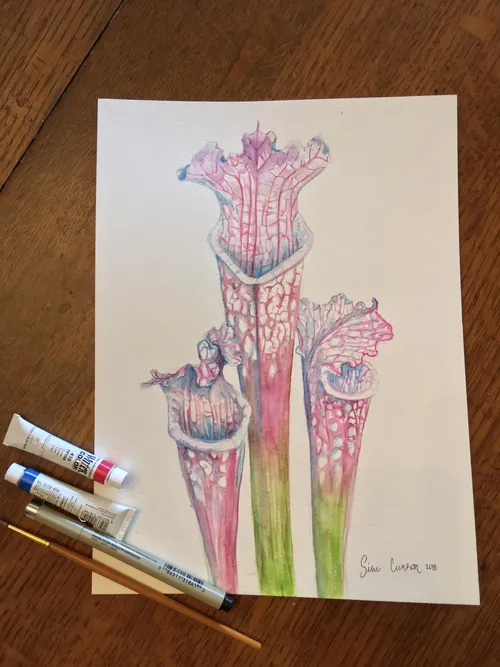 03. Painting of Sarracenia leucophylla in Liberty County, by Siru Curzon
03. Painting of Sarracenia leucophylla in Liberty County, by Siru Curzon .CXYSYAeR_ZpmCzA.webp) 04. Nepenthes hamata watercolor by Siru Curzon (now sold)
04. Nepenthes hamata watercolor by Siru Curzon (now sold) 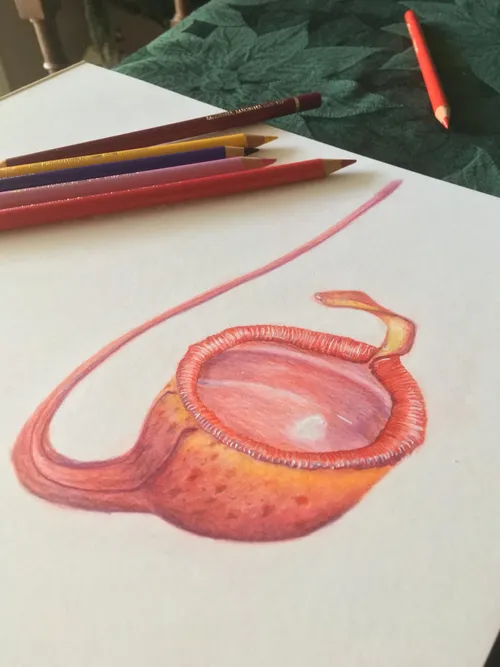 05. Nepenthes jamban, drawn by Siru Curzon
05. Nepenthes jamban, drawn by Siru Curzon 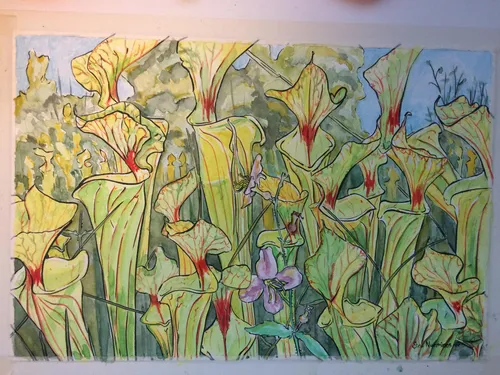 06. Sarracenia flava painting by Siru Curzon, 2017
06. Sarracenia flava painting by Siru Curzon, 2017 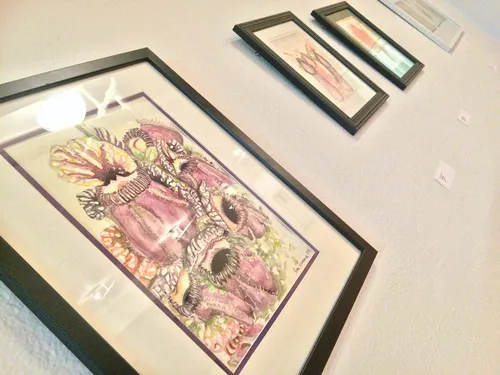 07. Sirus work on display at an art show
07. Sirus work on display at an art show 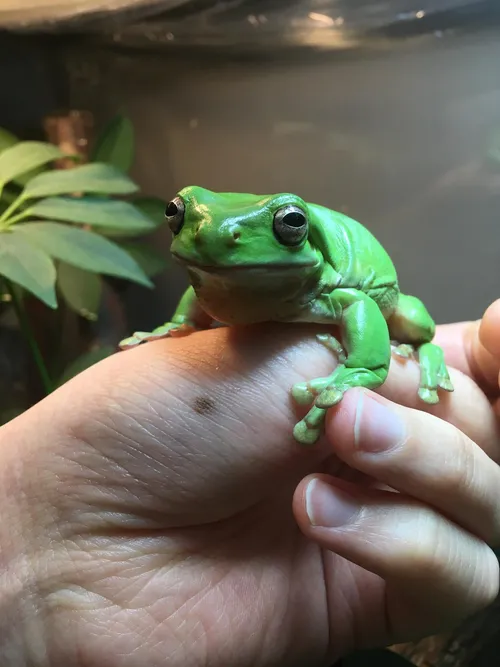 08. "This is Homie, who stayed at Meadowview in 2017:18 and now lives with me and Rich!"
08. "This is Homie, who stayed at Meadowview in 2017:18 and now lives with me and Rich!" I love old botanical carnivorous plant illustrations and their defined anatomy and colors. I like realism but also enjoy using colorful highlights/shadows which determine my style now, I think. I do watercolor and colored pencil works. So far, I’d say I probably enjoy illustrating Nepenthes the most but that’s probably because I haven’t drawn other plants that much.
My Instagram account is @curzonbotanicals and you can also find me on Facebook. My official website is curzonbotanicals.com.
I’m open for all commissions. Just have your reference photo ready and I can work on it!
Turn your plant into a painting! It can be physically with you no matter what happens to your plant. These “plants” can also be shipped anywhere in the world without phytosanitary or CITES paperwork. Much easier to mail than a real plant!
A big thank you to Siru for taking the time to write this post and share her story and experiences on Tom’s Carnivores. Be sure to take a look at Siru’s Instagram and Etsy store if you’re interested in buying some of her fantastic artwork.
To be notified when my next article goes live, you can subscribe via email to Tom’s Carnivores.
If you run a carnivorous plant nursery or society, are involved in the conservation efforts to protect these magnificent plants, or if you’re interested in contributing a guest post to the Tom’s Carnivores blog, please email me.
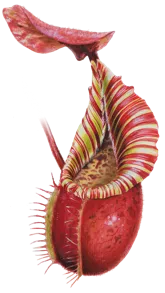
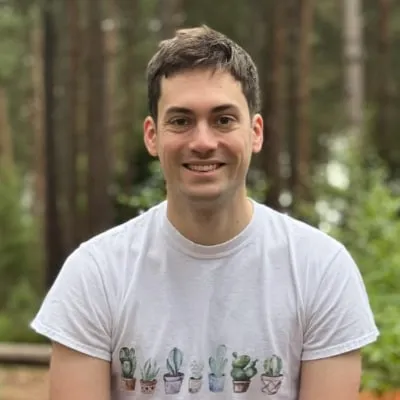
.CXYSYAeR_1wQ1fX.webp)